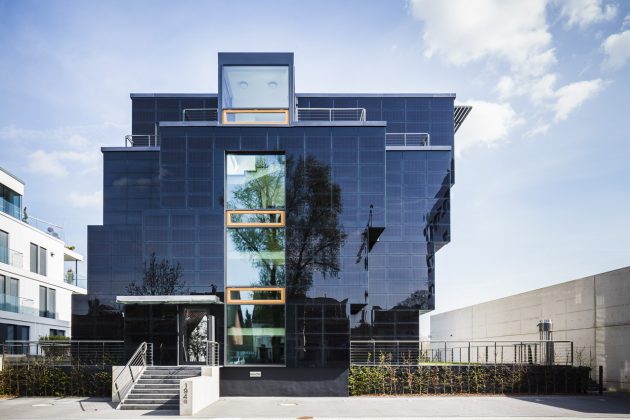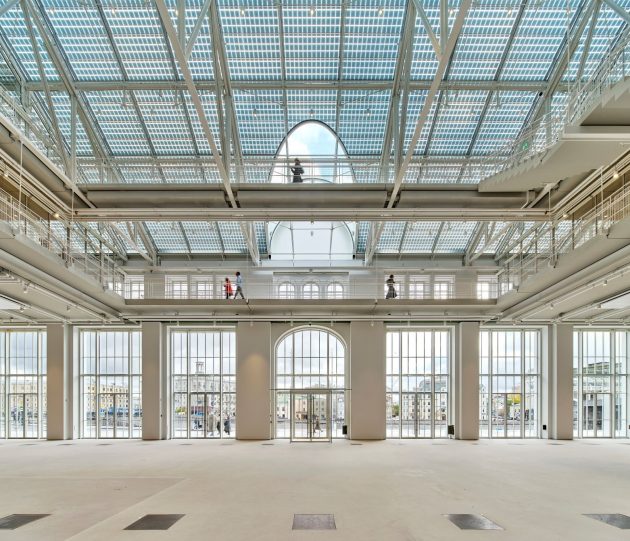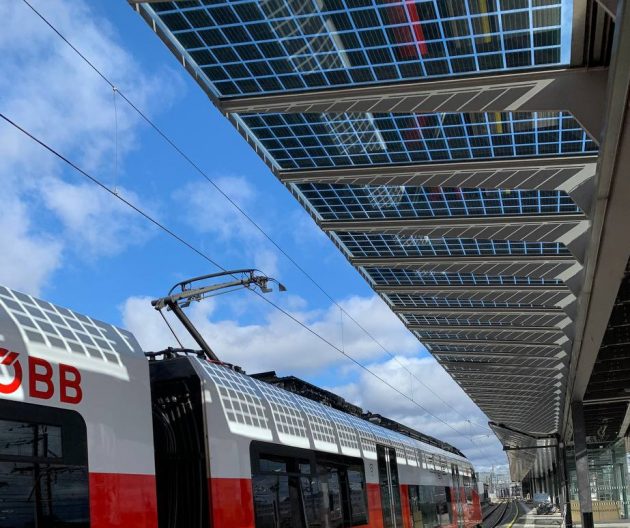
Modern building with BIPV facade © Sunovation
Energy self-sufficiency is becoming one of the central goals and interests of contemporary architecture. Building-integrated photovoltaics (BIVP) play a key role in this development, that comes with challenges but also stirs the creativity and innovative spirt of architects.
NEW REQUIREMENTs, nEW arCHItecuTRE
Architecture is an ever-evolving field and has always been driven by human requirements such as the need for shelter, security, and sanctuary. While these basic needs are still relevant in our modern times, the range of requirements has expanded in various ways. As a result of climate change constituting one of today’s major challenges, for example, aspects of sustainability and energy self-sufficiency gain in importance and even shape contemporary architecture.
To give an example, photovoltaic panels are no longer merely being installed on rooftops or facades of already existing buildings, but frequently a central element in the architects’ blueprints for new constructions. This early (pre-construction) consideration allows to utilize photovoltaic panels as integrated parts of buildings and thus, in innovative ways, functionally as well as aesthetically.
BIPV PANELS: MULTIFUNCTIONAL parts of buildings
Shade-giving BIPV-roof on a train station © Sunovation
First and foremost, the purpose of BIPV is to harvest solar energy, which is a renewable and clean type of electricity. And as the panels are integrated parts of the building, the electricity is generated on-site and thus, without need for additional land area – this makes BIPV, so to speak, a building material that has a return on investment,
Beyond all that, and as opposed to their non-integrated equivalents, BIPV panels moreover replace conventional materials and structures of buildings’ envelopes such as roofs and facades, in both physical and functional terms. Accordingly, BIPV panels are always multifunctional – some examples:
- Weather protection: Used as roofs or facades, BIPV modules form a solid barrier and function as weather protection such as against rainfall, sunlight, snowfall, and wind.
- Shading: Depending on the BIPV modules’ tint, grade of transparency, as well as the distance between the single cells, the translucency of the modules varies. Fully or partially light-tight modules can be used as shading systems as for instance as parts of canopies at train station platforms, parking lots or gas stations.
- Daylight illumination: The integration of clear, transparent glazing, on the other hand, allows for sunlight to fall through. Thereby, roofed buildings can be illuminated with natural daylight indoors, which helps to reduce the building’s lighting related energy consumption.
- Thermal insulation: BIPV modules consist of at least two glass panes (with a layer of PV cells locked in between). To improve a buildings energy efficiency and insulation performance, insulating glass can be used in the rear of the cells.
- Noise protection: Just as conventional glass facades do, BIPV modules constitute a solid, physical obstruction, which effectively reflects sound waves and noise.
BIPV Panels as design elements

Building with glas module © by Michel Denancé
Since the photovoltaic technology was developed in the 1950s, a lot of progress has been made. The performance has improved dramatically, and so did their appearance. Today’s BIPV panels are frequently custom-designed and thus, available in various styles, shapes, and colours. Therefore, they can be easily integrated and blended into architectural structures.
- Shapes: Most photovoltaic panels are shaped rectangular. This, however, is no necessity. The glass panes can just as well be triangular, pentagonal, hexagonal, elliptic, circular, trapezoidal, rhombic or of any other shape.
- Flat vs. curved: The conventional photovoltaic panel is flat. By using special sorts of glass and manufacturing processes, however, curved panels can be produced. This even allows, to apply BIPV panels on rounded and wave-like structures.
- Colours: Typically, photovoltaic solar cells are either blue or back, depending on the contained crystals. The colour of the modules, however, can be easily adjusted, as for instance by using coloured glass, coloured foils, or imprinted glass. Accordingly, BIPV modules are available in a wide range of colours.
- Invisible cells: Though the look of photovoltaic panels blends well into the design of many modern buildings, this isn’t true for all. The good thing is, however, that BIPV cells do not necessarily have to be visible. All it needs to “hide” the cells from viewers, are overprinted but translucent glass panes.
Regardless of the modules’ definite shape and colour, BIPV panels certainly enhance a building’s appearance. Especially, as they provide an eco-friendly and innovative aspect to its overall look.
Conclusion
As illustrated above, buildings benefit from BIPV panels in various ways. On the one hand due to their multiple functions – including electricity generation, shading, daylight illumination, thermal insulation, and noise protection – which all add to the self-sufficiency of buildings in one way or another. And on the other hand, due to their “green” aesthetic as well as their numerous design options, which architects can blend or integrate creatively into buildings’ envelopes and structures.















